

On behalf of The Hon. Nicola Roxon, Attorney-General and Minister for Emergency Management Ms Gai Brodtmann MP, Member for Canberra attended the Awards ceremony to congratulate award recipients.
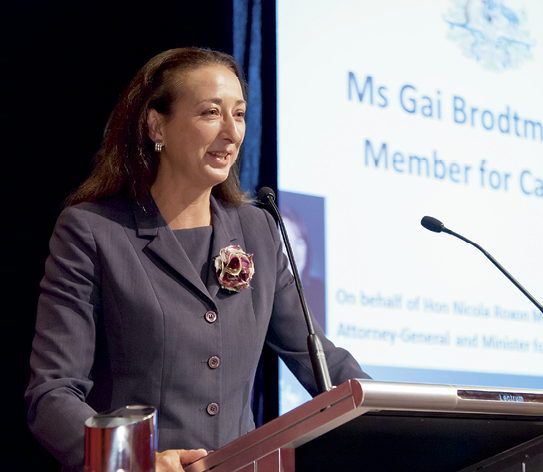
“The Resilient Australia Awards recognise innovative practices that are making our communities safer, stronger, more resilient and better prepared to manage any emergency situation.
“Over the last few summer seasons Australia has experienced natural disasters the likes of which many of us have not experienced in our lifetimes.
“While wild weather can be unpredictable, we can all be better prepared.
“The winning projects and commendations for the Resilient Australia Awards show how communities across our nation are developing innovative and creative ways to better prepare for emergencies and disasters,” said Ms Brodtmann.
Formerly known as the Australian Safer Communities Awards, the Resilient Australia Awards were renamed to reflect the National Strategy for Disaster Resilience.
The Victorian Black Saturday Bushfires Royal Commission recognised the bonds that people form with animals and the impact these bonds have on decision-making and safety during an emergency.
The Emergency Animal Welfare Plan takes an all-hazards and an all-species approach to promote effective planning and management of animals in emergencies. The plan ensures that animals are better considered and protected from suffering during and immediately following an emergency incident.

Gai Brodtmann MP and Dr Brendan Tatham.
The ACT’s Emergency Services Agency Media and Community Information Unit developed a system called SPOT to gather emergency details from the Territory’s emergency services, local media and social media sources. The information is monitored, assessed, compiled and distributed to the ESA website, senior officers, community outlets and the media as one message.
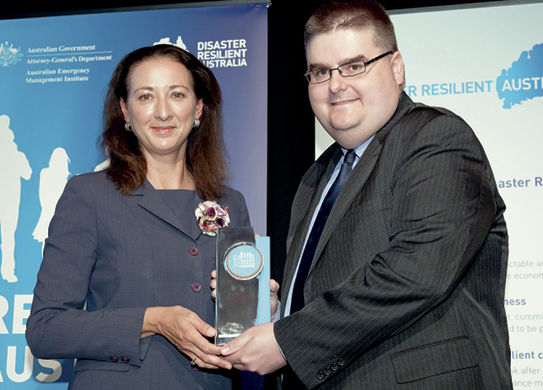
Gai Brodtmann MP and Darren Cutrupi.
The Wyong Shire Bushfire Management Plan covers more than 3000 hectares of bushland on the NSW Central Coast, with a 66km-long urban interface.
The plan includes a fire management plan that includes a review of fire breaks, an audit of fire trails, an analysis of the bush fire risk to a wide range of community assets including water and sewerage infrastructure, community buildings and telecommunications. It also includes an innovative community engagement activity to help take responsibility for improving their property bush fire protection.

Gai Brodtmann MP, Gina Vereker and David Lemcke.
The small rural Queensland town of Grantham became the single most devastated community of the floods that swept across Queensland in January last year.
The Strengthening Grantham Project is designed to protect human lives and critical infrastructure from future flooding. The township and community is moving to higher ground, out of the flood zone. It involves what is believed to be Australia’s first voluntary land swap agreement. This is an innovative and effective solution to relocating flood-prone communities.
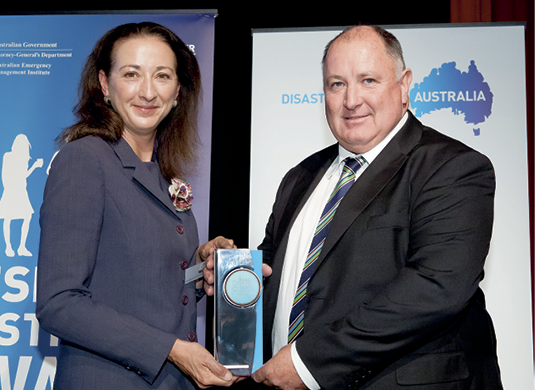
Gai Brodtmann MP and Mayor Steve Jones.
The SAVEM Plan enables the veterinary community in SA to be involved and responded effectively when an emergency incident occurs that involves animals, wildlife, livestock, companion animal, and pet care provided at evacuation centres.
Over 100 response-ready volunteer vets and nurses have been trained, along with 40 team leaders. Regional co-ordination centres have been established and are prepared for rapid deployment during emergencies.
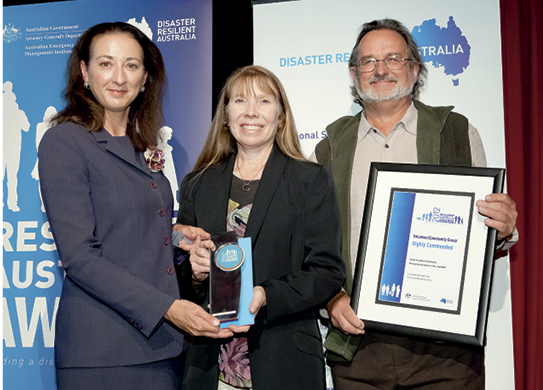
Gai Brodtmann MP, Dr Rachel Westcott and Emilis Prelgauskas.
The four Group 8 Brigades of Wollombi, Laguna, Bucketty and Millfield developed an integrated community engagement program that includes community bushfire safety forums and presentations, bushfire survival planning workshops, a women’s bushfire safety group, burn workshops and an informal café, and property inspections with bushfire risk assessments and preparation advice.
A key element to minimising risk is for the community to focus on understanding how to make the critical survival decision to leave early or stay and defend, following the national motto: PREPARE well, ACT decisively, and SURVIVE.

Gai Brodtmann MP, Glenn O’Rourke and Leanne Bell.
The Pigs Might Fly project was devised by residents if the small farming and mining community of Carisbrook, two hours north of Melbourne which was devastated by flood in January 2011. The community shared their ‘recovery wishes’ and from that prioritised several projects to rebuild their town. Among the projects is the upgrading of a reserve and swimming area, restoring the old railway station, having an annual festival, creating a welcome kit for new residents, and making safer road crossings for horses.
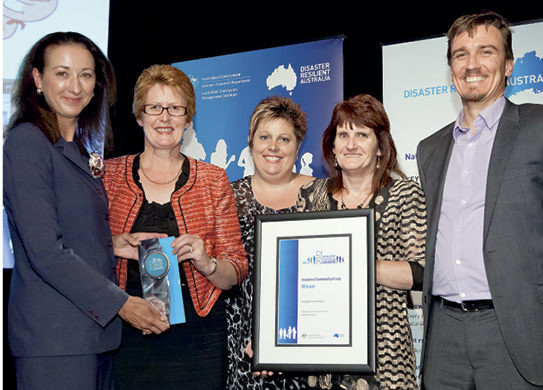
Gai Brodtmann MP, Lyn Symons, Narelle Harrison, Helen Broad and Sonny Neale.
The Know Risk project aims to better communicate and engage with communities about the risks that people and businesses face so that risk exposures may be reduced, and the impacts lessened. The project uses a range of information tools including social media, websites, PR messages, partnerships, an Insurance Tracker mobile app, photo inventory of possessions, checklists and tips about risk and protection, interactive forums, and real world examples of people who have experienced the impact of loss.
The prime objective of the program is to help individuals and businesses better understand and protect themselves against risk and to reduce the levels of under-insurance and non-insurance.

Gai Brodtmann MP and Joan Fitzpatrick.
The goal of the project was to help farmers and rural business managers be better prepared for natural disasters. The project draws heavily on the expertise of local farmers who share their disaster management techniques and strategies. It provides valuable lessons for the rural sector in northern Queensland and provides useful historic records of the events of the 12 months after Cyclone Yasi in February 2011. A series of fact sheets and a DVD were produced and have been distributed to 3,500 primary producers in the region.
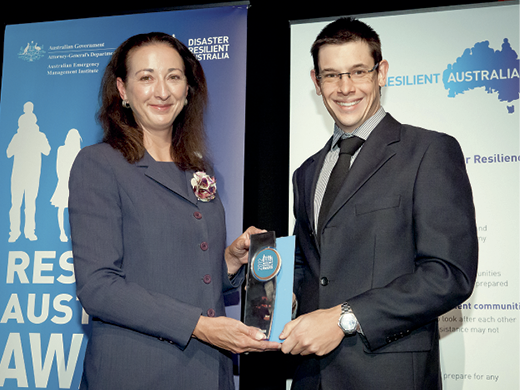
Gai Brodtmann MP and Brad Pfeffer.
The project uses several climate models to simulate the Tasmanian climate and integrate the impact of climate change on the island’s weather, water catchments, and agriculture. It includes aspects of sea level, flood-risk, heat, and severe winds. The study is a collaboration of 12 participating partners of both state and national organisations, including emergency services, scientific organisations, local authorities, and educational institutions. It has become the Tasmanian Government’s most important source of climate change data.

Gai Brodtmann MP, Prof Nathan Bindoff, Dr Chris White, Suzy Gaynor and Dr Stuart Corney.
The Bushfire CRC has been running an extension program since 2010 to respond to issues arising from the Victorian Black Saturday fires. The program looks at community benefit resulting from more efficient use of water-bombing aircraft to increased house and vehicle safety; from greater understanding of fire behaviour to smoke management; from better use of volunteers to creating bushfire arson reduction tools; and from the management of biodiversity to improved fire fighter health and safety.
The centre brings together the expertise of universities, national researchers and end users from all states and territories, conducting research into social, environmental and economic impacts of bushfire.

Gai Brodtmann MP and Dr Richard Thornton.
PlanDev Business Solutions worked with the Land Use Planning and Building Codes Taskforce, set up by the National Emergency Management Committee, to review and scrutinise the performance of land use planning and building code instruments across Australia.
A ‘roadmap’ was created aimed at improved safety and resilience in the built environment. The project’s aim was to make legislation easier, to develop processes, data and mapping, and to improve vendor disclosure, governance, education and cross-boundary collaboration.
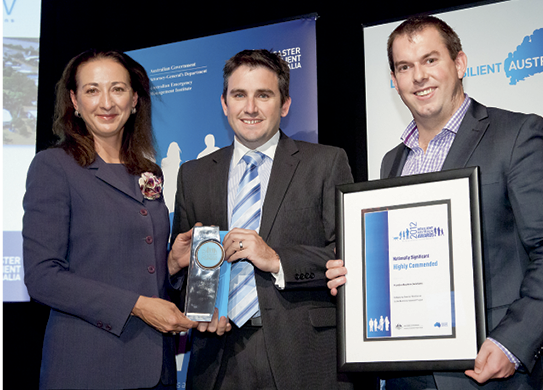
Gai Brodtmann MP, Brendan Nelson and Shane Murrihy.
The South Australia State Recovery Office developed national a-z guidelines to deal with the influx of donated goods immediately following a major disaster. Donated goods can quickly exceed actual need and inevitably stretch resources and infrastructure. It also diverts efforts from other aspects of recovery, just to manage the donations. The project included a public education package which has resulted in a decrease in unusable goods being donated and an increase in donations of money. The guidelines help the public and corporate sector better understanding how and what to donate for real benefit following a disaster.

Gai Brodtmann MP, Pauline Cole and Ronnie Fagotter.